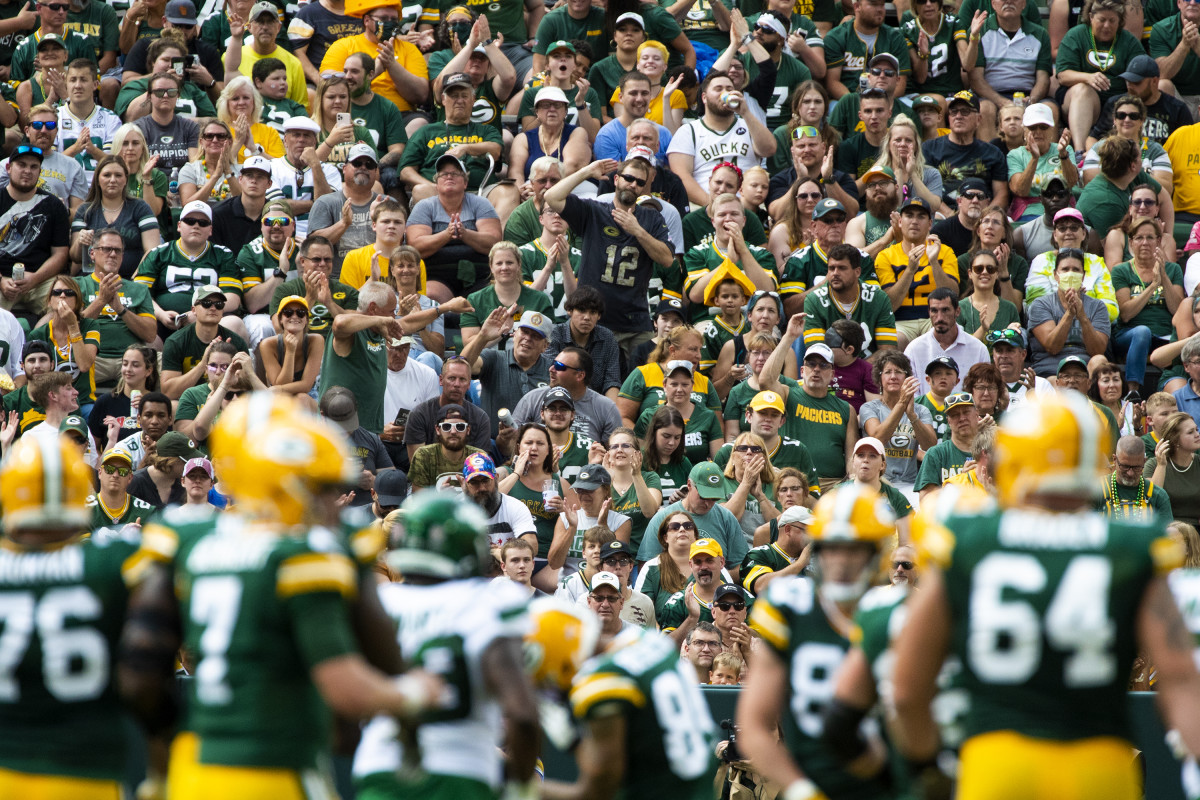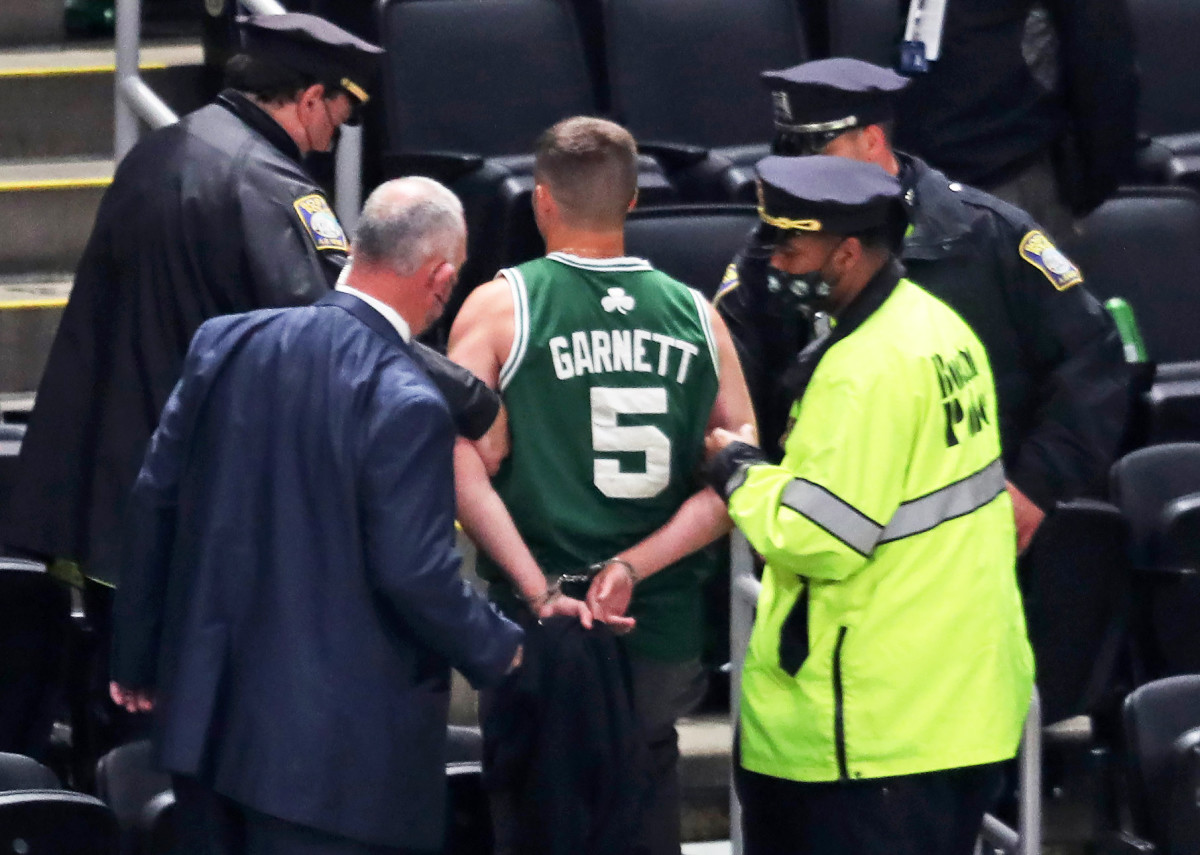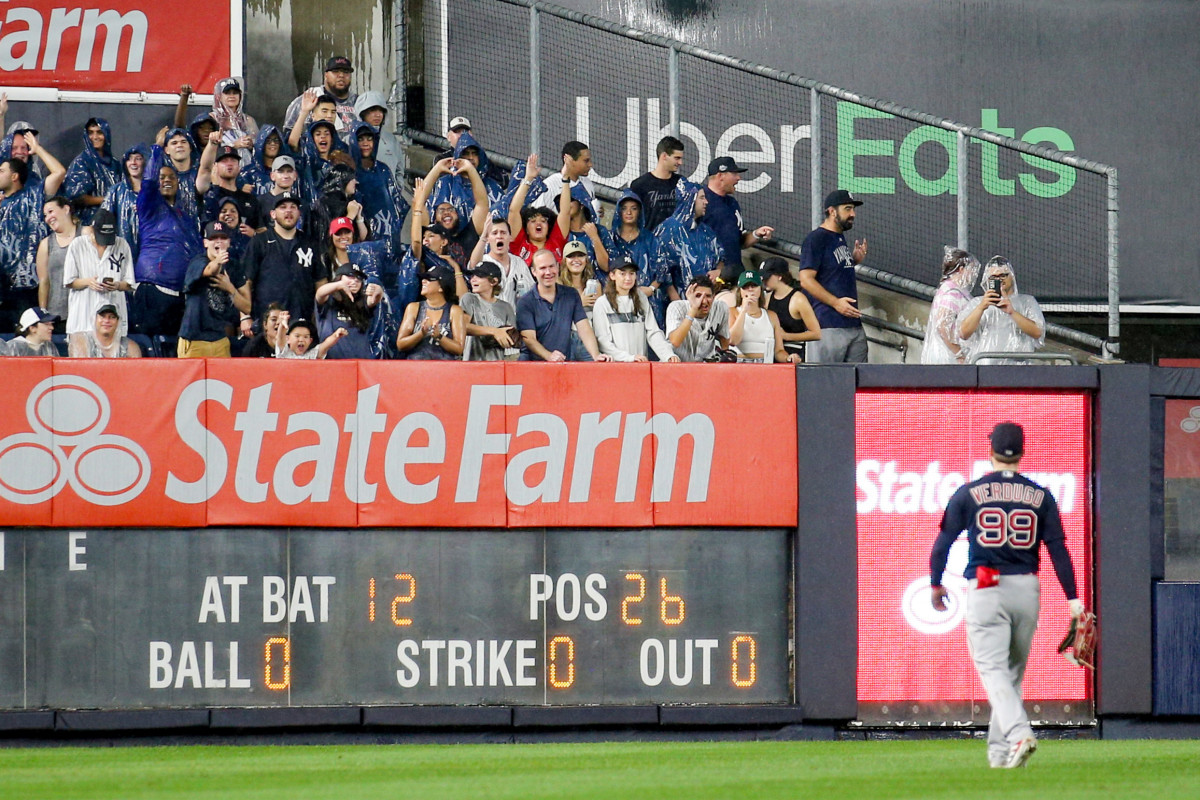Is the NFL Ready for All Its Rowdy Friends?

Early in July, Stacey Hall, a professor of sport management and the executive director at the University of Southern Mississippi’s National Center for Spectator Sports Safety and Security, logged onto Zoom to moderate the latest meeting of the research institution’s professional advisory committee—a group composed of more than 30 major league stadium operations executives and security directors, plus two FBI agents, that holds quarterly roundtables comparing and sharing best practices across their field.
On that day, discussion among members was dominated by a familiar concern in an economy currently claiming record-high job openings: Even with sports venues finally reopening at full capacity amid the COVID-19 pandemic, many are struggling to hire enough ushers, security guards and other part-time workers to make their game-day operations go. “The big issue and challenge was getting staff levels where they need to be, and getting staff adequately trained,” Hall says. “They’re finding it fairly difficult to recruit that frontline staff.”
But the committee also carved out time for a related topic, one made even more pressing given the lack of stadium personnel. As Hall puts it, “You’ve got the fans coming back, and I think you just have some folks acting out. You have to have enough trained staff in order to deal with these kinds of incidents.”

High-profile examples have abounded in recent months. Three alone occurred on a single night in the first round of the NBA playoffs, May 26, when one spectator spat on Trae Young at Madison Square Garden; another in Philadelphia dumped popcorn on Russell Westbrook; and three in Utah verbally abused the family of Ja Morant. Four days later, Kyrie Irving was pelted with a water bottle while leaving Boston’s TD Garden following Game 4 of Celtics-Nets; one day after that, someone stormed the court in Washington as Westbrook and the Wizards were in the third quarter against the Sixers.
Other sports have hardly been immune to the trend. In mid-July, a Yankee Stadium bleacher bum threw a baseball that struck Red Sox outfielder Alex Verdugo in the back, leading Boston’s players to briefly leave the field in protest. “As fans, y’all got to be better,” Verdugo told reporters. “You don’t throw s--t at people. You wouldn’t do that to somebody in the street.” Last month, meanwhile, at least three brawling fistfights broke out between warring factions in the stands…at NFL preseason games.
When it comes to bad fan behavior, useful empirical data is all but impossible to come by. “No one knows how many times an intoxicated spectator was told to pipe down by security in the aisle,” says Daniel Wann, a professor of psychology at Murray State whose work focus is on the “causes and consequences” of sports fandom.
Even so, academic researchers and industry experts agree that there’s enough anecdotal evidence to suggest a summer-long rising tide of incidents, one that will only remain in the spotlight as college football shifts into gear and the NFL kicks off in full this weekend, hosting some of the biggest sporting crowds the country has seen since life shut down some 18 months ago.
“In the past, we mostly had to worry about spectator conflict based on their rivalry with the opposing team,” says Paul Turner, a venue management consultant who spent 13 years as director of event operations for the Cowboys’ AT&T Stadium before leaving in May. “That was how we tried to identify likely challenges—people wearing opposite jerseys sitting near each other. It seems like now there’s a lot of other issues that become the flashpoint for conflict among fans, and that people nowadays are more inclined to act out on their aggressions and defend their opinions than before.”
Adds Indiana University professor Edward Hirt, a social psychologist who studies the motivation behind fan identity and allegiances, “It’s a combustible kind of situation.”


As chair of the psychology department at Tufts University, just outside Boston, and a longtime fan of the city’s fiercest rival, Sam Sommers has attended his fair share of Red Sox–Yankees games over the decades, both at Fenway Park and in the Bronx. Which is to say, he has seen some spit—and dumped beers, and stolen hats, and thrown punches.
“When we’re frustrated, we become more aggressive,” explains Sommers, a social psychologist and co-author, alongside Sports Illustrated’s Jon Wertheim, of This Is Your Brain on Sports, which included a chapter on the science behind bad fan behavior. “You’ve got a lot of ingredients for that at a sporting event. Sports has a lot of tremendous social benefits to offer, but it’s always been this cauldron of competition and adrenaline and alcohol. That recipe for potential disaster has always been there.”
If so, how to explain the recent spike? Sommers offers two theories. He believes it’s possible that there isn’t actually a spike; rather it only seems like one as players increasingly speak out against abuse and social media spreads every stadium skirmish. “The other, equally plausible hypothesis,” he says, “is we’re seeing some release of pent-up bad behavior, that people have been locked down in quarantine and thrown back in a competitive sports environment.”
In this regard, to Sommers and others, sports fans aren’t much different than other bad actors in an increasingly polarized and fractious society. “We’ve seen examples of this, some people having some difficulties reconnecting in public and behaving properly,” says Maryland Stadium Authority vice president Vernon Conaway, who oversees security planning for M&T Bank Stadium, home of the Ravens, and Oriole Park at Camden Yards. “We see it across a variety of industries: Airline passengers attacking flight attendants, teachers being attacked for mask compliance, and obviously some of the egregious behavior we’ve seen from fans.
"We use all that in our risk assessments for the events, and we share with our security staff—the early warning signs, early recognition of potential problems,” he says.
The country’s political climate and racial reckoning likely play roles in inflaming tensions, too. “You see this in European soccer—the racist component to bad sports fans,” Sommers says. Absent any data, though, deciphering the root cause remains guesswork. “In general, nobody has the answer,” Hall says. “And I don’t think we will for a while, until some studies are conducted on fan behavior in COVID.”
Tackling the issue wholesale can be just as difficult. “I don't know there’s a magic bullet out there of something that’s going to circumvent this,” Hirt says, short of perhaps the unthinkable: banning alcohol. Still there are many ways to help curtail potential issues, starting with staff numbers. “You can’t police it all,” Wann says, “but you can at least have enough of a presence that people are aware they’re there.”
Whether NFL stadiums will be adequately staffed to handle any potential problems this season remains to be seen: Teams are rarely eager to share the details of their preparations and, of the eight teams contacted for this story, all declined or did not respond to requests for comment. Conaway says, though, that there are other ways teams can try to prevent incidents before they happen. He cites the “importance of being proactive” in displaying the stadium’s fan code of conduct on signs, on tickets, on the Jumbotron, wherever possible. When Turner worked for the Cowboys, he says, instructions for fans on how to report stadium issues were added to the team’s mobile app. “Even deploying technology so staff can call for assistance,” he says, pointing to a “growing trend” of outfitting ushers with two-way radios or other communications devices.
Watch NFL games online all season long with fuboTV: Start with a 7-day free trial!
Stiff punishments can also prove effective deterrents; in all of the aforementioned incidents from the NBA playoffs, as well as with the baseball that hit Verdugo, every fan involved was banned for life from the respective venue. Enforcing those bans can be difficult, though. In international soccer, teams are sometimes penalized for fan behavior by being forced to play in empty stadiums, a punishment that effectively turns an entire fanbase against the offender; earlier this month, the Hungarian men’s national team was ordered to play its next three UEFA games behind closed doors due to discriminatory behavior by its supporters. “Although,” as Sommers notes, “inebriated people aren’t famous for thinking the levels of deterrents through.”
If the leagues themselves have mandated any additional security measures for their teams and venues in response, they are keeping them private. An MLB spokesman declined an interview request, instead reiterating a statement issued earlier this season in response to Padres left fielder Tommy Pham’s accounts of receiving vulgar gestures and taunts from fans: “Preserving the safety of our on-field personnel and our fans is essential to us. We will continue to devote resources to emphasizing and enforcing the applicable laws and codes of conduct and providing an enjoyable experience at our ballparks.”
An NBA spokesperson responded to an interview request by providing a statement that read, in part, “The positive experience of all attendees at our games is our priority and it is critical that we show respect for players, officials and fellow fans. The enhanced fan code of conduct will continue to be vigorously enforced in order to ensure a safe and respectful environment for all involved.” The league did not elaborate on exactly what was enhanced, or what vigorous enforcement looks like.
The NFL also declined to make anyone available, though NFL spokesman Brian McCarthy wrote in an email, in part, “We always review best practices from other sports leagues and entertainment properties around the world. We are also in constant communication with local, state and federal agencies to ensure our protocols are state-of-the-art and world class for our fans, players and personnel.” He added, “So you are aware, we had more than 1.2 million fans attend 119 games of 22 teams last year.”
The implication here, of course, is that incident rates are almost assuredly microscopic compared to the vast hordes of spectators who enter stadiums every season; over the past two years, Conaway says, Camden Yards has seen zero police arrests during games and an ejection rate that is “flat to slightly down,” predominantly propped up by people “not complying with the health and safety protocols.” Still it only takes one comment, or one swing, to potentially set off a section. “It’s concerning to me,” Hirt says. “Do I want to take my kids to certain kinds of events, knowing what the climate is right now?”
What does this all mean for football season? On the surface, more of the same. Stadiums are still understaffed with undertrained seasonal workers, fans are still relishing the thrill of returning to the stands, and the pandemic is continuing to rage, with NFL and college teams employing a range of mask and vaccine requirements this season. Whether this environment leads to more incidents, though, is another question. “Will this be a continued spike?” Sommers says. “The whole idea that this is blowing off steam would seem to suggest that, once they get it out, things will revert to normal.”
Then again, it’s only September now. Sommers wonders what will happen once rivalry trophies, bowl berths and playoff seeding reenter the picture too. “Maybe early college football won’t be that bad,” Sommers says. “But when you get to Alabama-Auburn, USC-UCLA, we’ll see.”
More NFL Coverage:
• Back-to-Back Super Bowl Champions? Good Luck
• Bold NFL Predictions
• MMQB Week 1 Staff Picks
Sports Illustrated may receive compensation for some links to products and services on this website.
